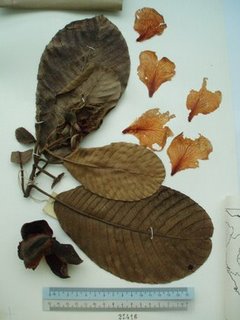Doing taxonomic work
Dealing in taxonomic work is not an easy task. One have to familiarize oneself with the botanical terms being used in the taxon one is working on. Besides, different authors use different terms to describe the features that they think best suited the specimens that they examined. Therefore, one will be easily confused on what to term to use and what actually differentiate this situation. In my case, i encountered the term 'hairy, tomentose, hispid and hirsute' being used to describe the petiol as well as the abaxial of the leaf surface of Dillenia species. One really have to scrutinized the specimens to know what the other author is talking about. This take time and experience to understand. One can't determine how it is by just reading the terms.
Secondly, it's the matter of sitting for hours in a herbarium observing dry, dull, brownish specimens. Can you imagine that it took me 4-5 hours work a day in the herbarium and being able to examined only 4-5 specimens. Each specimens took me almost an hour! Of course it doesn't mean starring on the herbarium sheet. It's the work of measuring and describing all the characteristic that we observed and touch. Well, i even question myself before that 'How could i cope by looking at this dull specimens?' and 'What will i actually learnhrough this dry material?'. Well, things aren't that bad actually. Not all specimens are dull.
Below is a specimen of Dillenia ovata that capture my eyes and help to boost my interest and energy to do my herbarium work in UKMB on 5 August 2006. A neat and perfect specimens with fruits and flowers will give you all the characteristic that will help you to determine the species better. It is nice when one already master the skill in the taxon that one is working on. By then, one can determine the species in the genus or family just like snapping the fingers by just looking at simply a dry leaf of that species. As usual, nothing comes without hardwork.

Bravo and good luck to all taxonomists and new practitioners like me.


0 Comments:
Post a Comment
<< Home